A Primer By William (Bill) Norris
I moved to southwestern New Mexico 22 years ago with very little knowledge of desert plants. As the new botanist at Western New Mexico University, I knew I had a lot to learn. Fast. Fortunately I discovered City of Rocks State Park, and after I got over my initial awe of the geologic splendor of the place I realized that this park protects a prime slice of Chihuahuan Desert. As I visited the park again and again, driving the Loop Road that envelops the cluster of tall rock pinnacles for which the park is named, stopping by the park Botanical Garden and then venturing out to hike the Hydra Trail, I slowly became familiar with some common desert plants. And so can you.
If someone asked you to name a few typical desert plants, I suspect that most of your lists would include a cactus or two. I often ask my students at WNMU to explain why cacti are able to tolerate the heat and arid conditions of this region. A few answers come quickly .. “they can store lots of water,” “they have spines to avoid being eaten”, .. [pause] .. “they have extensive horizontal roots to capture monsoon rains, ..” [long pause] .. and then I throw in an alternate photosynthetic pathway, Crassulacean Acid Metabolism (CAM) which is ideally suited to our hot climate. This article is not the place to elaborate on this topic, but if you are interested in learning more about CAM open any botany textbook, consult Wikipedia or ask an AI chatbox (yes, I am begrudgingly acknowledging some value in this new technology) to summarize the topic for you.
More than ten species of cacti occur at City of Rocks State Park. These include several species of low, sprawling prickly pear species, including Brown-Spined Prickly Pear, with its (you guessed it) brown-based spines, and somewhat more robust Engelmann’s Prickly Pear which has yellow- to white based spines. The purple fruits produced by these two prickly pear species are tasty and are often used to make cactus jelly, but be careful when you handle them because they, like the pads on which they sit, are covered with clusters of tiny barbs (i.e., glochids) that will take weeks for you to extract from your fingers. Another common cactus that you can’t miss in the park is Walking-Stick Cholla which has spreading cylindrical limbs that often barely conceal a sideways opening cactus wren nest or two. Perhaps the easiest park cactus to recognize here is rotund Fishhook Barrel Cactus, whose restricted occurrence in the vicinity of Loop Road City of Rocks State suggests to me that it was planted in the park at one time. In addition to its distinctive, outlandish hooked spines for which it is named, Fishhook Barrel Cactus often present another distinctive feature: an array of yellow, egg-like fruits on its summit.
Click to open images at full size.

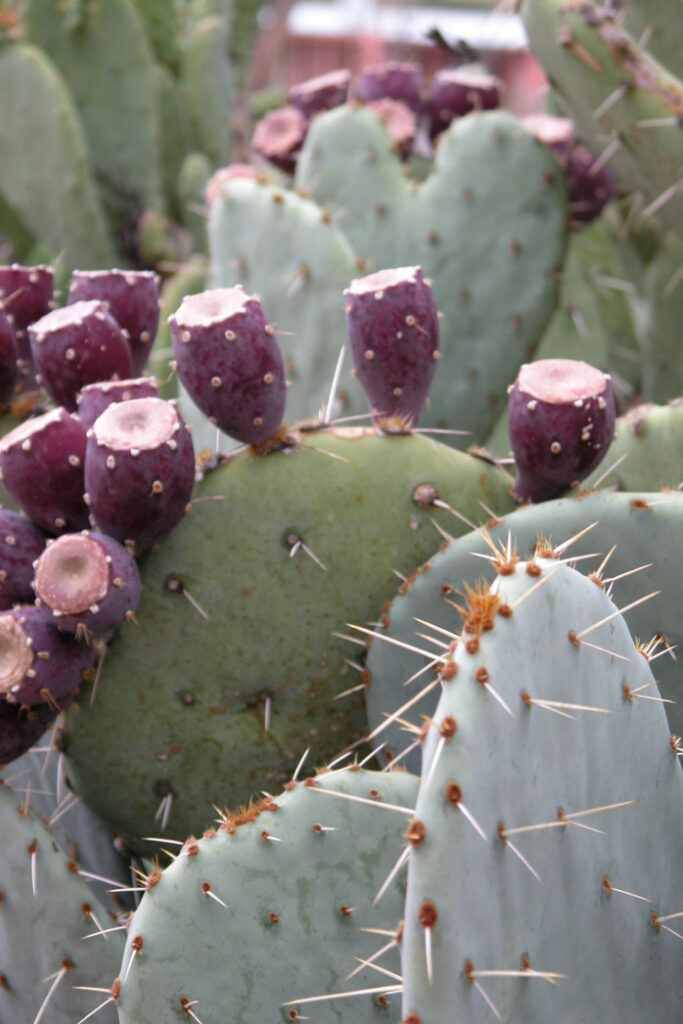
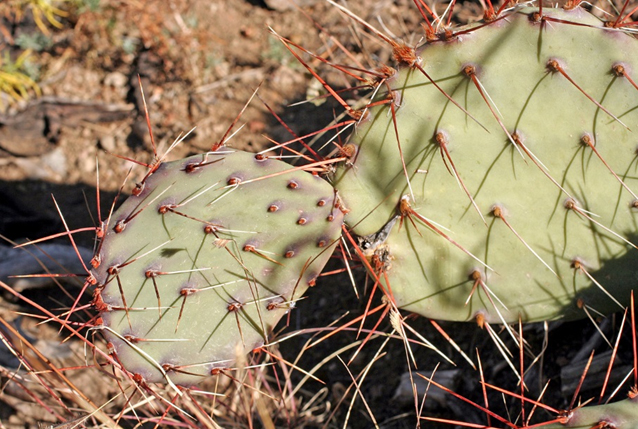
One of the most distinctive small trees at City of Rocks is Honey Mesquite, which gets its name from its fragrant flowers. With a little practice, it can be easily recognized by its wishbone-like leaves, often subtended by a pair of menacing spines. In contrast to most cacti, Honey Mesquite, employs a different strategy for coping with arid conditions: very deep roots, sometimes more than 100 feet below the soil surface, that tap into water sources unavailable to most other desert plants in the park. Honey mesquite is a native tree species in the Southwest but has apparently increased in abundance over the past 500 years with the introduction of cattle grazing. How so? Grazing apparently opened up desert grasslands to provide opportunities for mesquite seeds to germinate and seedlings to take root.
Although considered to be a noxious tree species by some, mesquite seeds provide food for a variety of animals, and it is a honey plant for some bee species. Of course, many people enjoy meat cooked in the smoke of burning mesquite wood, and some people prepare flour derived from ground-up seed pods of this and other mesquite species. All and all, a fascinating desert plant.
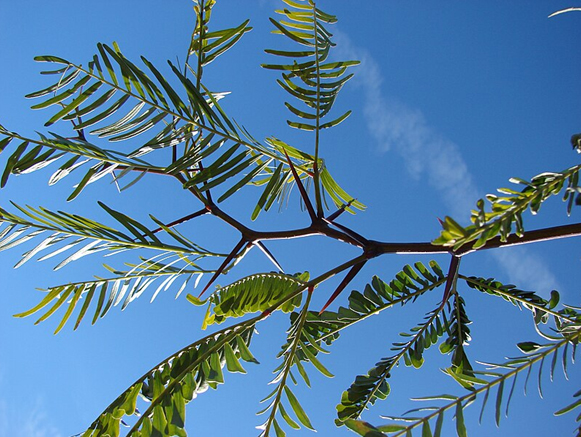
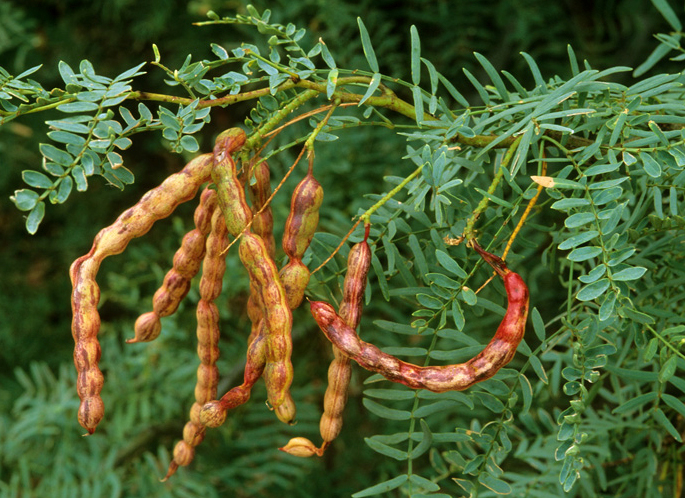
If any of you have had the opportunity to drive through the desert in southwestern New Mexico during, or soon after, a monsoon rain, you have probably been delighted by the smell of the desert. The source of this aroma is, in large part, creosote. The leaves of this most common desert shrub are covered in volatile oils that once airborne saturate your nostrils. One of my former students so admired creosote that she named her child after the scientific name of creosote, “Larrea.” Such an honor!
On either side of I-10, you will see wide expanses of olive green creosote populations, which are distinctive in that individual plants are widely separated from one another. Why this aloofness? One reason is that creosote roots exude a chemical into the soil that inhibits germination of seeds surrounding a given plant. Hence, creosote employs yet another unique strategy to cope with limited water supplies in the desert.


No introduction to desert plants at City of Rocks State Park would be complete without brief mention of Ocotillo. Like Fish-Hook Barrel Cactus, this woody plant has no doubt been introduced in the park as indicated by its very localized occurrence: along Loop Road, near the park Visitor’s Center, and at the top of Overlook Road. Ocotillo exhibits yet another unique strategy to coping with arid desert conditions: it drops its leaves during dry periods to reduce water loss and in fact will resemble a cluster of dead sticks. However, after a rainfall ocotillo puts on a new set of leaves and resumes the business of photosynthesis (again, consult any biology book to review the meaning of this biological process). Ocotillo is a favorite of wildlife enthusiasts because its red flowers are regularly visited by hummingbirds.
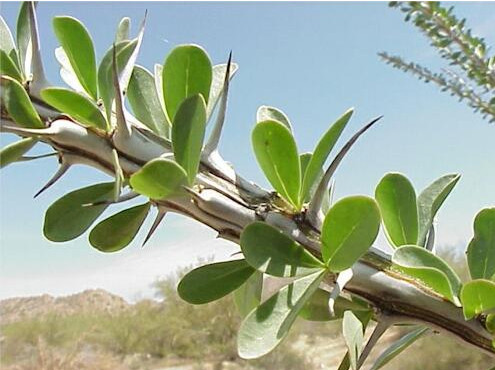
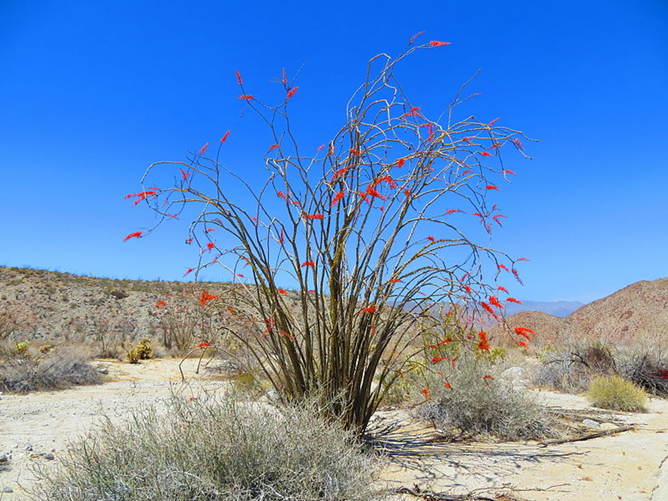
I will conclude this primer with an introduction to Agaves and Yuccas, both of which are characteristic of the Chihuahuan Desert so well represented in the park. As I tell my students at WNMU, Agaves and Yuccas can be easily confused, because they both produce basal rosettes of leaves. However, most agave and yucca species can be readily distinguished after examination of their leaf margins. Leaves in most Agave species are lined with spines, and you definitely don’t want to fall into one as at least one ER doc in Silver City can attest. In contrast, leaf margins in most Yucca species are fibrous. One of my favorite memories from my 23 years teaching botany at WNMU is when a student and his son visited my office to demonstrate how rope is made from the fibers of Soaptree Yucca.
Parry’s Agave, with its somewhat spoon-shaped leaves, is the native species of Agave at City of Rocks. It is pollinated, by of all things, by bats! Like most agave’s, Parry’s Agave is clonal meaning that what appears to be multiple plants in close proximity is most likely one plant with all “pups” connected be underground shallow rhizomes. Although a given Parry’s Agave pup will die after it flowers and fruits, the entire plant lives on via the other pups. Planted and persisting here and there near the Loop Road and the Visitor’s Center in the park is Palmer’s Agave, which has long, dagger-shaped leaves. This is the common Agave species that you see at lower elevations in southwestern New Mexico and southeastern Arizona, easily recognized when driving 75 miles an hour along Hwy I-10. As I have learned from visiting with students, staff and teachers from Mescalero Middle School, Agaves are regularly harvested by Apaches who use it in many traditional ways. In case you are wondering, tequila is indeed an agave product, but it is not produced from either of the above species.
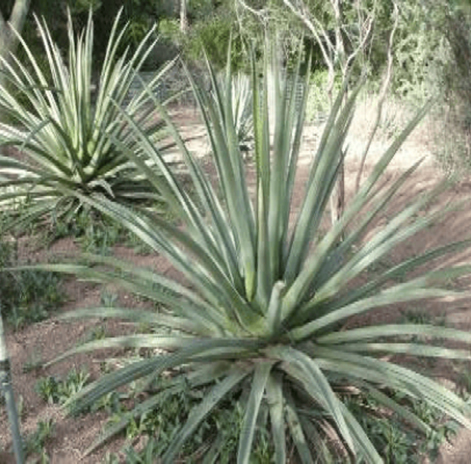
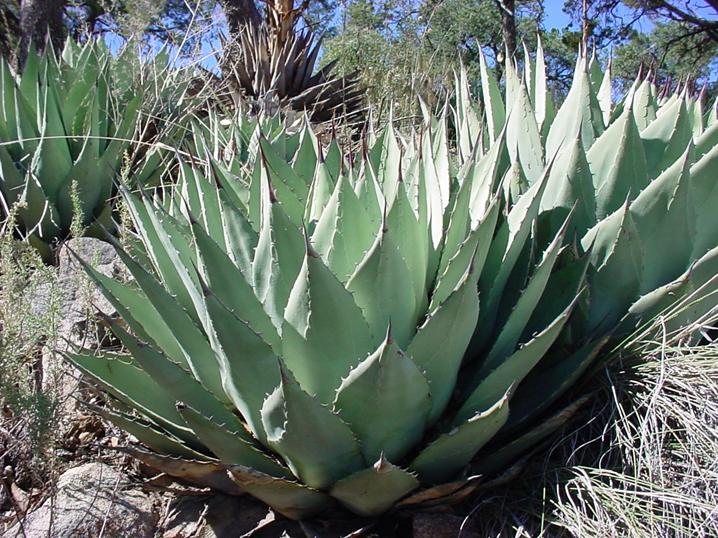
Finally, the two native yuccas species. Like agaves, yucca exhibit clonal growth, but in contrast to agaves a given yucca “pup” can flower and fruit multiple times over its lifetime. Soaptree Yucca is easily distinguished from Banana Yucca in that its fibrous-margined leaves are thin, that it often, though not always has a tall trunk, and that its fruits are dry. Being a frequent tall plant on the landscape, its reproductive stalks are a favorite bird perch including for loggerhead shrikes which are resident at City of Rocks in the winter. In contrast, Banana Yucca has broad, trough-like leaves, never has a tall trunk, and has fleshy fruits (hence its name). If you have time on your hands, pull up a YouTube video of the relationship between Yuccas and the Yucca Moths that pollinate them. Evolutionary biologists refer to this relationship as an obligate mutualism: neither the Yucca nor the Moth can exist without the other.
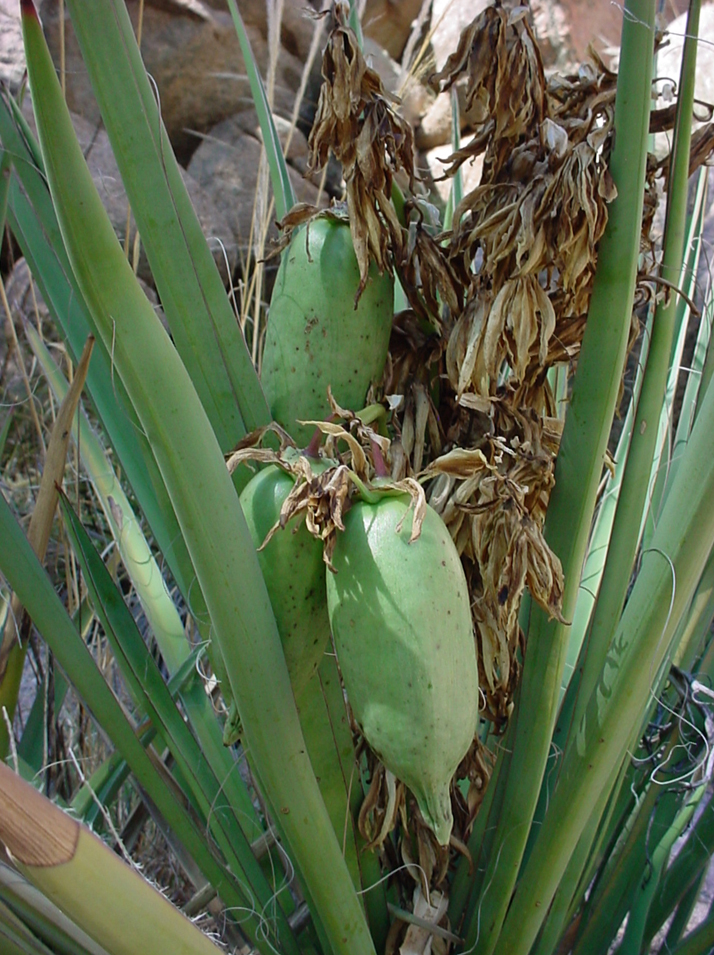
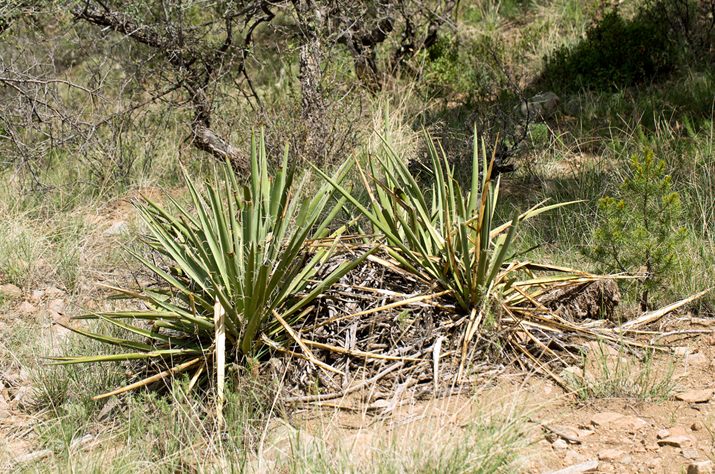
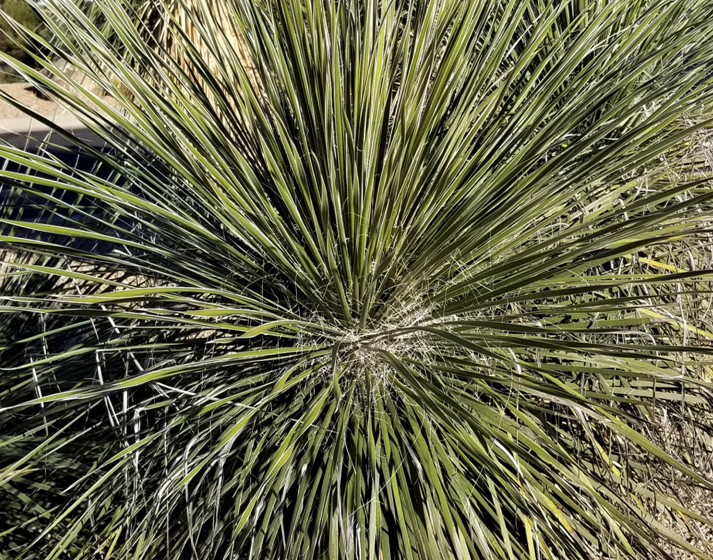
I sincerely hope that you, the reader, have an opportunity to drive around Loop Road, hike the Hydra Trail, stop by the park Botanical Garden, check out the plantings on the south side of the Visitors Center, and begin seeing the above and other desert plants at City of Rocks State Park, as I began doing 22 years ago and continue to do.